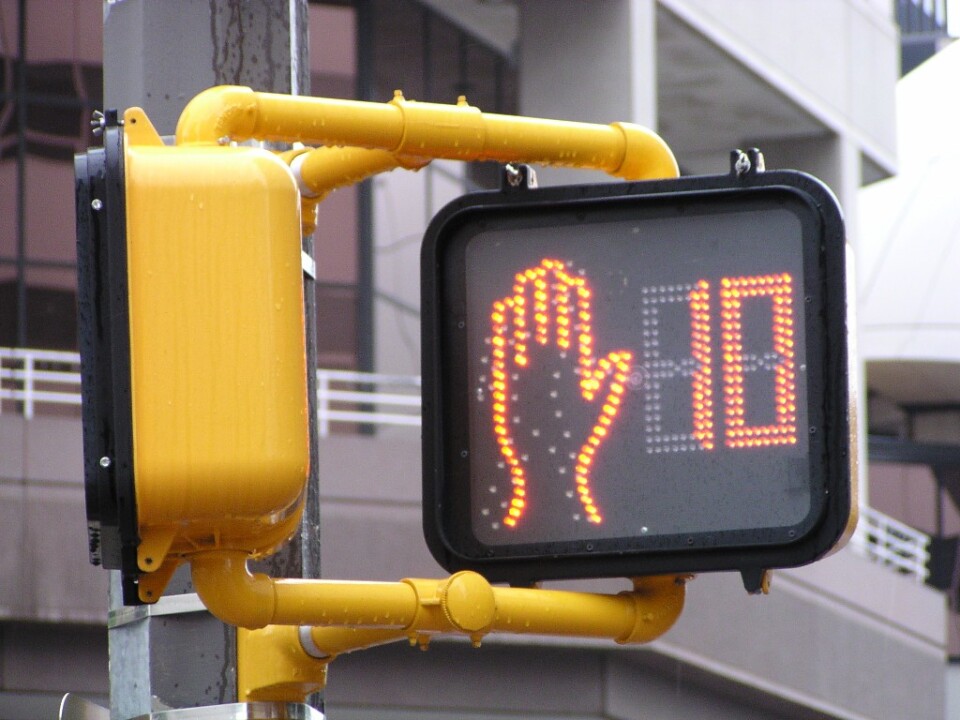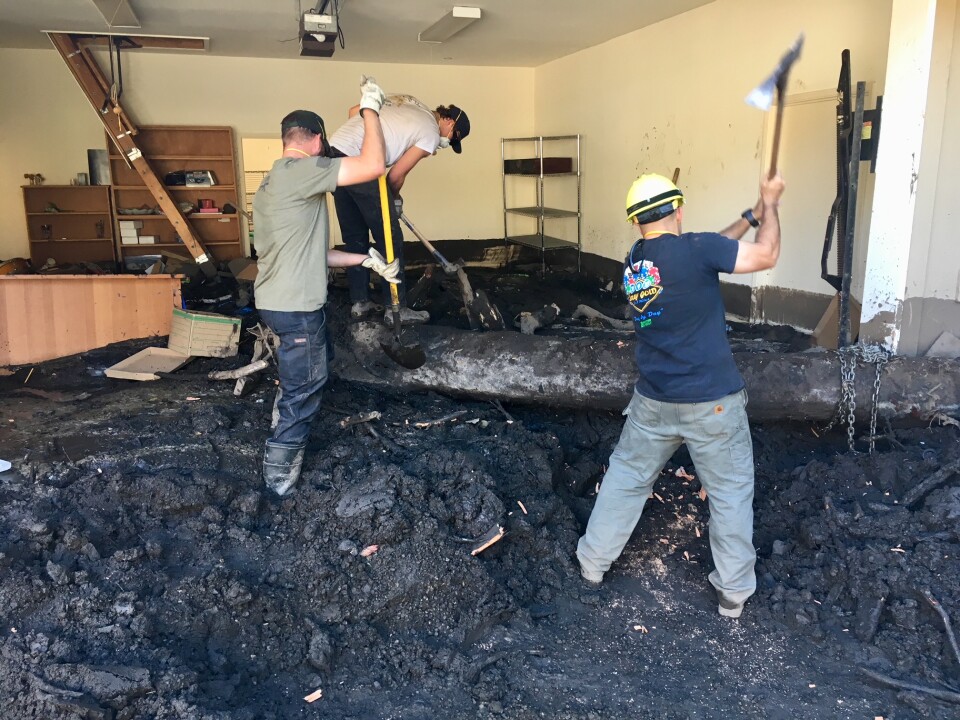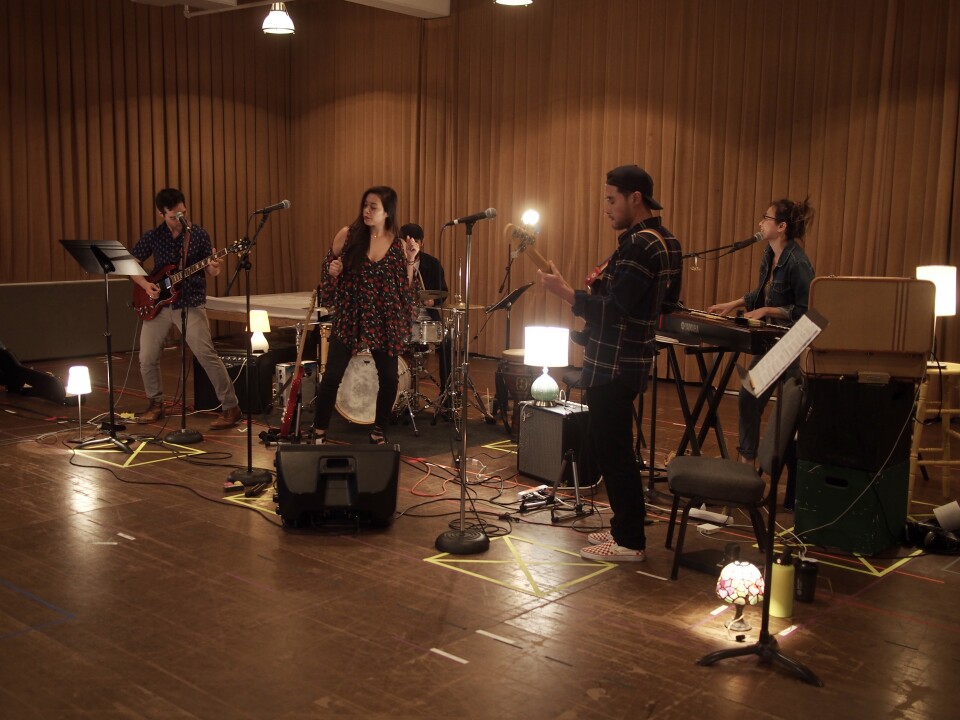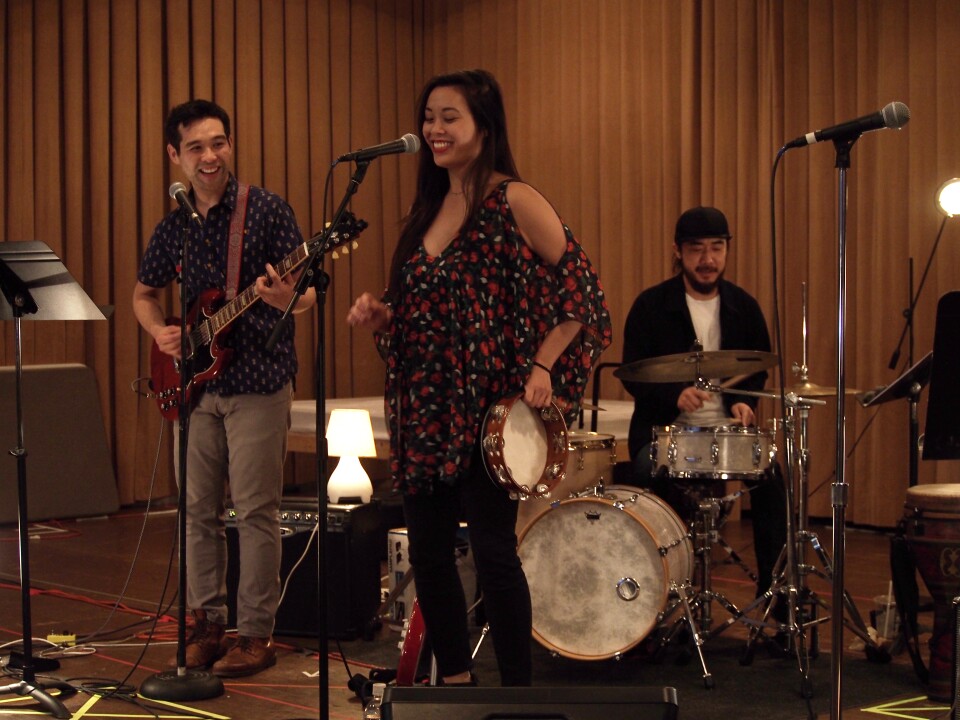It's been 50 years since the Chicano student walk out, the bucket brigade digs out mud from homes, exploring the music that survived the Khmer Rouge genocide.
50 years ago, thousands walked out of East LA schools. Now, they say ‘the fight isn't over.'
Distracted pedestrians could be fined $100
The city of L.A. reported Wednesday that overall traffic fatalities are down slightly, but pedestrian deaths are on the rise. They increased 17 percent last year compared to 2016 and are up more than 80 percent over the last two years.
Now the city of Montclair, 30 miles east of Los Angeles, is tackling part of the problem with a distracted walking ordinance. Pedestrians there could be fined $100 for walking across the street using a phone or other mobile device or while wearing headphones or ear buds.
Jon Hamilton is director of administrative services for the city of Montclair. He wrote the distracted walking ordinance and he joined Take Two to explain how it works.

Why Montclair enacted a distracted walking ordinance
We were looking at the rising issue regarding distracted walking. I coined them the cell phone zombies, but in a serious context, it's very visible to see folks walking across the street absolutely oblivious to their surroundings. We've had a few incidents in Montclair where pedestrians have been struck by vehicles, but our situation isn't unique to Montclair. Montclair has no greater occurrence of pedestrians being struck or less than any other part of the nation.
What the ordinance does exactly
You cannot cross a street or roadway in the city of Montclair while distracted by a mobile electronic device, while engaged in a phone conversation or by having both ears covered by personal audio equipment. The reason why is this is where the pedestrian is going to encounter the 5,000-pound vehicle traveling down the road. We have laws that prohibit distracted driving; it doesn't matter if the pedestrian is right or not, the laws of physics are that the pedestrian will always lose.
Education is the goal
We have a collaborative effort with our local schools. They're educating the students about this ordinance. As pedestrians stand at a crosswalk, there's a sign staring back at them. In an un-signalized crossing that doesn't have the buttons, we are in the process of having stencils prepared with a "don't walk while looking at your cell phone" logo that will be placed on the ground.
Enforcement with a fine is secondary
It's not intended to be strict enforcement. The primary purpose of this ordinance is for education. The fact that it has a fine provides a little bit of teeth to help encourage behavior in a safer direction, so the ordinance right now, we're in the warning phase. Each first time offender is provided a warning. Second time offenders, it's the discretion of the officer whether to cite an infraction.
Native Americans tribes left out of California commercial cannabis laws
The legal sale of recreational pot is officially two months old, but there are still a lot of wrinkles that need to be ironed out, such as the regulation of cannabis on Native American land and how cannabis can be produced and sold there.
Many tribal leaders and their attorneys are pushing for legislation that would outline the rules for Indian reservations. Take Two checks in with Mark Levitan, a tribal attorney, and Tina Braithwaite, chairwoman of the tribal council at Benton Paiute Reservation , about the legal implications going forward.
Tina Braithwaite
Recreational cannabis on Native American land
We were not included in the legislative language. If tribes want to enter the cannabis market, we have to waive our sovereign immunity and give up civil jurisdiction in order to participate in the California marketplace.
The tribes and California government
I have never had a government-to-government consultation with the California Bureau of Cannabis Control. I have requested numerous times to formally meet with the governor's office, but I was denied because the office said they cannot do anything without legislation. We just want a legal path forward. Now we are being locked out of the California marketplace without explanation. It's disheartening that the state government doesn't see us as governments. They only see us as individual business.
Mark Levitan
State vs. tribe licensing process
The state doesn't recognize that tribes are their own jurisdiction. They have the power to regulate on their own reservations. The state regulation as it's framed right now treats Native American business, as well as non-Indian business located on tribal land, as if the tribal government doesn't exist at all. This is unprecedented in California for the state to demand tribes to essentially not be tribes for purposes of certain economic activities.
State's jurisdiction over Indian reservations
The state has criminal jurisdiction over Native American tribes. The United States Congress gave the state of California criminal jurisdiction in the 1950s, but the state does not have jurisdiction over civil purposes. Now that cannabis is legalized, it has created a civil regulatory area for tribes to operate cannabis businesses independent of state law.
Interview Highlights have been edited for clarity
Volunteers are helping dig Montecito out from under the mud, one bucket at a time
It's been almost two months since mudslides devastated Montecito. Residents are still working to dig themselves out from the destruction.
The Santa Barbara Bucket Brigade is a volunteer group started by locals who have been helping homeowners dig the mud out of their homes, one bucket at a time.
Tom Cole is a founding member of the group. Cole said the brigade's first focus was digging mud away from and out of people's homes so the houses could dry out and residents could retrieve their remaining possessions.
Sometimes homes were buried in two to four feet of deep mud and residents couldn't even enter their homes, Cole said. the volunteers are clearing the mud away mainly by hand.
"In some areas, we're running these machines that can move a lot more mud than just a single handheld shovel, but it's the collective effort really that makes progress for us," Cole said.

Cole said there is a long road ahead of the residents in Montecito as they try to return to some semblance of normal life. With another storm forecast and evacuation warnings issued in parts of Santa Barbara County Wednesday, the future is even more uncertain.
"We're just trying to spread the word to as many people in the community as possible to take the evacuation order seriously," Cole said.
In addition to digging out homes, the volunteers are working to save the local trees that can die from suffocation under the mud if they aren't dug out. Cole said these Coast Live Oak trees help define the character of the community.

Cole and his wife have done aid work before. Cole said having that experience has helped him to keep calm and comfort homeowners in Montecito.
Working in post-disaster conditions may be somewhat familiar to Cole, but he said it's more emotional when the destruction is in your own community.
"It's very personal right now. We all know people who have lost their homes. Many of us were close with people who lost their lives or lost members of their family," Cole said.
For Cole and his wife and friends on the Bucket Brigade, the clear response to the devastation they saw was to lend their help any way they could.
'Cambodian Rock Band' spotlights the psychedelic sounds before the Khmer Rouge era
People don't often consider how Cambodia’s brutal Khmer Rouge regime impacted the country’s once-vibrant rock music scene, but playwright Lauren Yee’s new performance explores that very relationship.

The show Cambodian Rock Band combines theater and live music composed by the band Dengue Fever to tell the story of a Cambodian American family and their relationship to this musical history. Its world premiere begins at South Coast Repertory next week. Take Two contributor Quincy Surasmith spoke with Yee about how she came to connect these two very different legacies.

To any outsider who doesn’t really know the history of Cambodia, the idea of genocide and psychedelic surf rock would not seem to fit together, but they do.
Yee was commissioned by South Coast Repertory to write a new play about any topic she could research around Orange County. She arrived in the middle of Anaheim’s Cambodian Music Festival, a Dengue Fever concert, and the annual Cambodia Town fundraiser. Yee was quickly drawn to the story of Cambodia’s rock music as the subject of her play.

When the Khmer Rouge came into Cambodia and took over the country, it was not only the people that we lost, but also all the incredible music that these people had created. The play is really trying to give you a sense of that loss and what these people might have created, had they lived longer.
For actor Joe Ngo, a Chinese-Cambodian American from Monterey Park, the play and its music has allowed him to explore his own family’s history. The song “Chnam Oun Dop Pram Muy (I’m Sixteen)” particularly resonated with him.

I brought it to my mom…and she was like, ‘Oh my god, that is my childhood song!’ She immediately started singing to it and knew almost every word to it.
Cambodian Rock Band runs at South Coast Repertory in Costa Mesa from March 4-25.




